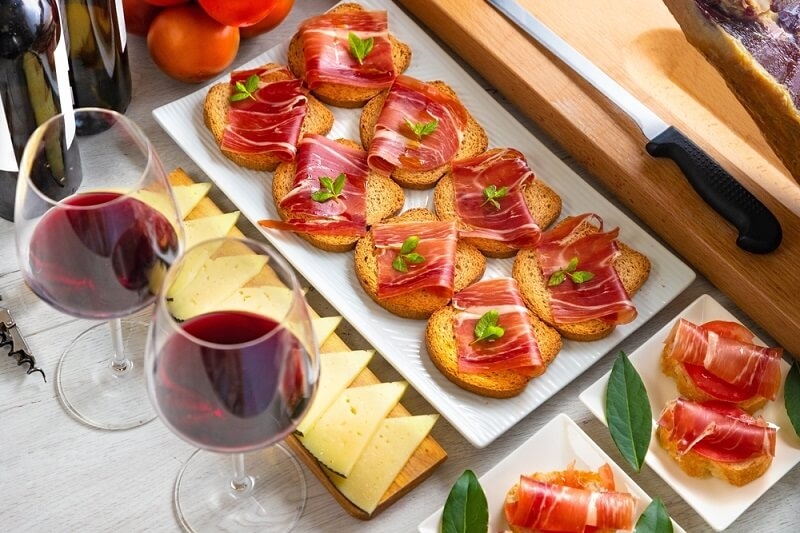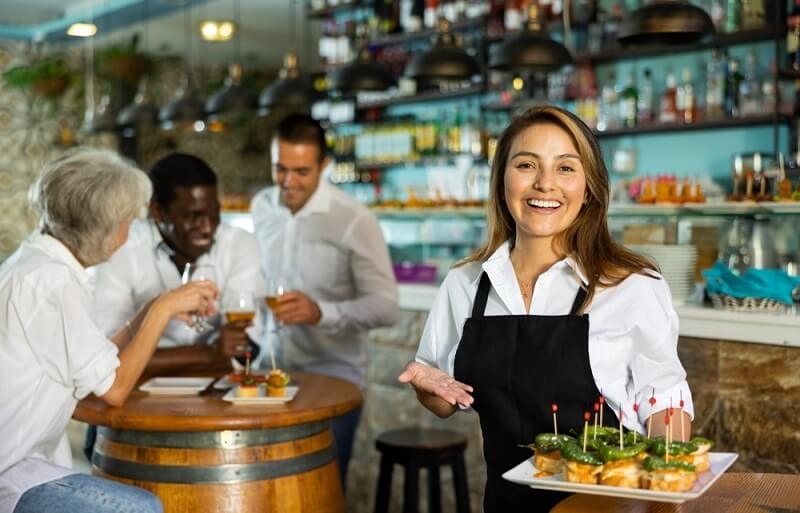
Visiting a lively tapas bar in Spain is entering the country's heart. You have arrived in a whirlwind of experiences, and I mean this in the best sense. You have the energy of the conversations mixed with the clinking of glasses and the rich scents of garlic, paprika, and sizzling olive oil. You have arrived at Spanish tapas—a culinary and social ritual, an experience to be shared that is so much more than food. It is something you feel, experience, and become—your philosophy about life and connection to shared celebration of flavors. To understand Spain is to understand why Spaniards love tapas and unravel its surprising history. It’s not just a style of eating; it’s a way of life in Spanish society.
The Spanish tapas tradition is more about the experience than the food. The reasons why Spaniards love tapas can be distilled down to several central components of their cultural identity: sociability, variety of flavors and styles of cooking, and the slower pace of life. In Spain, a meal is rarely a solitary activity. It is an opportunity to get together, talk, debate, and share. The tapas bar, or taberna, is the town square, the community center, and the sitting room all wrapped up in one. There is no hurry. An evening of tapeo—moving from bar to bar and enjoying tapas—easily stretches into a multi-hour event. It is a moving festival that invites movement, conversation, and most importantly, an experience shared with others.
When it comes to variety, this eating style is unmatched. Rather than choose a single large dish to eat and commit to, you are free to sample a little bit of everything. This style perfectly matches the Spanish fondness for exploring culinary quality and adventure. It makes room for experimentation and discovery. Additionally, the ritual is as democratic as it is social. From university students to business executives, everyone gets to stand shoulder-to-shoulder at the bar, together eating for the same simple purpose: good food and company. This aspect of equality and eating socially is a big part of why Spaniards love tapas; it can occur anywhere with basically anyone.
Recently, "small plates" has proliferated across the international culinary landscape. Although they may seem very similar, there are enormous cultural differences between the authentic Spanish tradition of tapas and the "small plates" trend that is occurring today. Understanding the distinction is important to see what tapas really are.
Tapas are fundamentally social and embedded in the cadence of life in Spain. They are not a meal in and of themselves but rather an appetizer before lunch or dinner (although a full tapeo could easily be dinner). They are meant to be shared, of course, but they are also rich in tradition, often uniquely tied to a specific region and even a specific bar. The focus is on simplicity, quality ingredients, and pairing them with a drink.
Small plates are a type of dining limited to restaurant dining. They are a culinary moment that allows chefs to deconstruct a meal into smaller, meant-to-be-shared portions and to often focus on innovation, fusion, and the complex creativity of chefs. While small plates can be nice, they do not possess the natural social ritual and connection to a specific time of day—for example, pre-lunch—and time and place in cultural history. The Spanish tapas tradition is about the experience of standing, moving, and chatting. Small plates are about sitting at a table and ordering a curated series of plates. One is a cultural tradition with deep roots; the other is a contemporary dining style.

The world of tapas is rich with interesting distinctions and local variations. Learning some of the best facts about tapas culture can uncover its amazing scope and breadth.
Knowing the unwritten rules of tapas dining etiquette can help you enjoy tapas like a local. Observing proper tapas dining etiquette will enhance your experience and help you blend in seamlessly.
While the heart of the Spanish tapas tradition remains in the local taberna, it has also evolved. Today, you can find high-end gastro bars where chefs elevate tapas to an art form, creating miniature culinary masterpieces. There are also dedicated tapas restaurants that cater to tourists and locals alike, offering a wide array of options in a more formal setting. However, the soul of the tradition remains unchanged: it is about sharing, community, and a profound love for good, honest food. The origin of tapas in Spain may be humble, but its legacy is a vibrant, living culture that continues to define the Spanish way of life.
The Spanish tapas tradition is far more than a culinary trend; it is the vibrant, beating heart of Spanish culture. It’s a ritual built on community, conversation, and the shared joy of simple, exquisite flavors. From its humble, legendary origins to the bustling bars of today, understanding why Spaniards love tapas offers a delicious window into the soul of Spain. It’s a celebration of life, one small, perfect plate at a time.
This content was created by AI